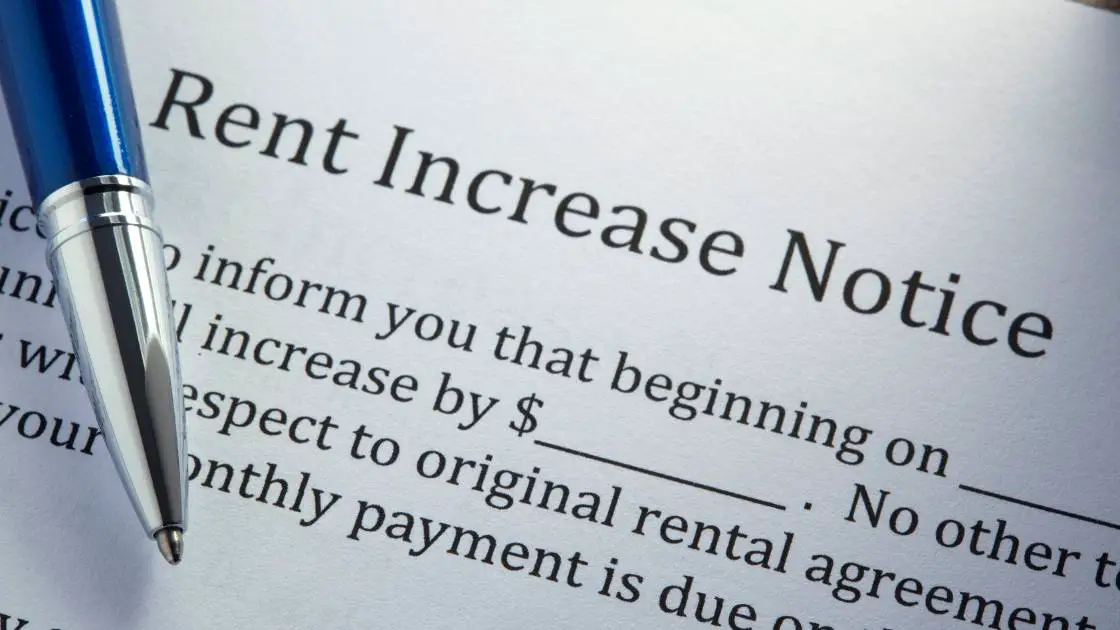The state of California houses over 39 million Americans as of 2023. Nearly half of those people are currently living in rental properties.
Now if you live in California, you understand that rents in many parts of the state are outrageous. To combat runaway rent increases, the state has implemented a number of important tenant protections that you should know.
In this article, I am going to answer the question of how much a landlord can raise rent in California. I will cover the relevant laws and walk you through the formula used to calculate maximum rent increases.
I will also include a section that takes you step by step through each part of the formula and provide links to the CPI in your region, which is one of the key components of the formula.
If you don’t have the time to read through it all, here’s a short answer to the question:
As a general matter, landlords in California may raise rents no more than (i) 5% per year plus the annual change in CPI (an inflation measure) for the local area or (ii) 10% per year, whichever is lower.
Ok, let’s get into it!
The information contained in this post is for informational purposes only. It is not legal advice. You should seek the advice of a qualified legal professional before making any decisions relating to the topics covered by this article.
We may earn commissions from products and services that are purchased or recommended through our website as part of our affiliate partnerships. As an Amazon affiliate, we may earn from qualifying purchases.
AB 1482 – The Statewide Law That Governs Rent Increases
In 2019, the California legislature passed the Tenant Protection Act (AB 1482). This law attempts to maintain affordable rental property prices by regulating the amount and frequency of rental price hikes. It also provides for other tenant protections like “just cause” lease terminations.
Under the Tenant Protection Act, landlords can only increase rents within the percentage caps laid out under the Act. Plus, any increase in rents must be tied to the area’s annual Consumer Price Index (CPI), which is the cost of essential utilities. More on how to calculate that later.
Here are the crucial points of AB 1482 you should remember:
- Rent control is a state-wide and applies to every county in California.
- It limits the annual rent increase to the lower of (i) 10% or (ii) 5% + your local CPI.
- Rent control takes effect from January 1, 2020, to January 1, 2030.
Finally, rent control applies to every tenant covered by AB 1482. Thus, renters and landlords cannot waive these protection rights, and any agreements to do so are considered void by law.
It is worth noting that some areas in California already have rent control provisions in place and AB 1482 law will not supersede them so long as the local rent control ordinance are more restrictive (i.e., it limits annual rent increases to an amount less than 5% + CPI). Source
So How Do I Calculate the Maximum Rent Increases?
The basic formula is simple.
Take a base increase of 5% and add your local CPI to it. How do you figure out your local CPI?
You need to find the Consumer Price Index for All Urban Consumers for All Items for the metropolitan area in which the property is located, as published by the United States Bureau of Labor Statistics (USBLS). Source.
Here are the four key CPI regions in California (and links to the USBLS page for such regions)
| Region Name (and link) | Counties Covered |
| CPI-U for the Los Angeles-Long Beach-Anaheim metropolitan area | Los Angeles and Orange Counties |
| CPI-U for the Riverside-San Bernardo-Ontario metropolitan area | Riverside and San Bernardino Counties |
| CPI-U for the San Diego-Carlsbad metropolitan area | San Diego County |
| CPI-U for the San Francisco-Oakland-Hayward metropolitan area | Alameda, Contra Costa, Marin, San Francisco, and San Mateo Counties |
Note: If your property is not covered by one the regions above, you can use the California Consumer Price Index for All Urban Consumers for All Items published by the Department of Industrial Relations, which you can access here.
You calculate the CPI by looking at the April number for the previous year and compare it against the April number for the previous year (simply put – look at April’s 12 month percent change in the latest year).
So, to continue with the math, you find out your local CPI and add it to 5%. If that number is bigger than 10%, then the rent increase is capped at 10%. If it’s less, than the rent increase is capped at the lower number.
If this all sounds a bit complicated and confusing, that’s totally understandable and you may want to consider getting some formal legal advice to help you work through it.
If you prefer to have a lawyer assist you, I would try JustAnswer. They boast access to thousands of highly-rated, verified real estate lawyers whom you can connect with via their unlimited chat service.
By clicking the banner below, you can get a one week trial membership for only $5, which you can cancel at any time.

Landlord Also Need to Give Adequate Notice of Rent Increases
Another point to remember for tenants and landlords is the notice requirement for every rent increase. Any plans to increase the rental amount should be conveyed to the tenants beforehand and in writing. It can be personally delivered or via mail in accordance with legal requirements.
As dictated by law, notice for rent increases of more than 10% should be communicated 60 days prior. For rent increases equal to or lower than 10%, the landlord must give a 30-day notice. Source.
Final Thoughts
So there you have it – a step by step guide to figuring out how to find our your maximum rent increase. Hope this has been helpful and happy renting!


